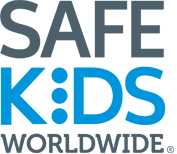WASHINGTON, DC – U.S. Transportation Secretary Ray LaHood today joined National Highway Traffic Safety Administrator David Strickland and Safe Kids President and CEO Kate Carr for the kick-off of Child Passenger Safety Week to remind parents and caregivers to make sure that they are properly using and installing their child safety seats. A new National Highway Traffic Safety Administration (NHTSA) survey shows that parents are making five significant mistakes when using car seats and booster seats. It also found that one in five parents do not read any instructions when installing seats.
“The key to keeping kids safe is to make sure your child is in the right seat for their age and size - and to make sure that the seat is correctly installed in your vehicle,” said Secretary Ray LaHood. “We encourage everyone to take advantage of the many resources available to ensure you’ve done everything to properly protect your child.”
According to a new NHTSA survey, the following are the five most significant and commonly observed mistakes made by parents and caregivers when using and installing car seats and booster seats:
- Wrong harness slot used - The harness straps used to hold the child in the car seat were positioned either too low or too high;
- Harness chest clip positioned over the abdomen rather than the chest or not used at all;
- Loose car seat installation - The restraint system moved more than two inches side-to-side or front to back; anything more than one inch is too much.
- Loose harness - More than two inches of total slack between the child and the harness strap; there should be no slack.
- Seat belt placement was wrong – Lap belt resting over the stomach and/or shoulder belt on the child’s neck or face.
The survey also revealed that 20 percent of all drivers of child passengers did not read any instructions on how to properly install their child restraints, yet 90 percent felt ‘confident’ or ‘very confident’ that their car seats and booster seats were installed correctly.
“Child safety seats save hundreds of young lives every year, but proper use is vital,” said Administrator David Strickland. “That’s why we’re urging everyone to make sure their kids are properly protected on every trip, every time.”
“Child safety seats can significantly reduce the risk of death or injury in the event of a crash,” said Kate Carr. “Engineers are working hard to ensure cars and car seats are designed to keep kids as safe as possible. But it’s up to every parent to take full advantage of these innovations by making sure car seats are used and installed correctly. Safe Kids and NHTSA are teaming up to show them how.”
To help parents ensure their child seats are installed and used correctly, Safe Kids and NHTSA are encouraging everyone to take 15 minutes to conduct an at-home checkup using the following Safe Kids downloadable checklist:
- Right Seat. Check the label on your car seat to make sure it’s appropriate for your child’s age, weight and height.
- Right Place. Kids are VIPs, just ask them. We know all VIPs ride in the back seat, so keep all children in the back seat until they are 13. Doing this, along with correctly using the appropriate child restraints, greatly reduces the risk of injury.
- Right Direction. You want to keep your child in a rear-facing car seat for as long as possible. When he or she outgrows the seat, move your child to a forward-facing car seat. Make sure to attach the top tether after you tighten and lock the seat belt or lower anchors.
- Inch Test. Once your car seat is installed, give it a good shake at the base. Can you move it more than an inch side to side or front to back? A properly installed seat will not move more than an inch.
- Pinch Test. Make sure the harness is tightly buckled and coming from the correct slots (check manual). Now, with the chest clip placed at armpit level, pinch the strap at your child’s shoulder. If you are unable to pinch any excess webbing, you’re good to go.
Parents are encouraged to read the vehicle and car seat instruction manuals in addition to following the checklist.
Child Passenger Safety Week began September 16 and culminates September 22 with National Seat Check Saturday. Throughout the week, Safe Kids, with the support of the General Motors Foundation, will host hundreds of child seat inspections across the country as part of its Buckle Up Program, a national initiative established 15 years ago to keep children and families safe in and around cars. Car seat inspections offer drivers the chance to receive assistance and guidance from certified car seat technicians regarding proper installation of their child safety and booster seats.
For more information on Child Passenger Safety Week, visit http://www.nhtsa.gov/Safety/CPS.
For more information on Safe Kids Worldwide, visit www.safekids.org.
To view NHTSA’s Research Note on the National Child Restraint Use Special Study, click here.
Media Contact
Jen Pollakusky
Media Manager
[email protected]
202-662-4476
Karen Aldana
NHTSA
202-366-9550
